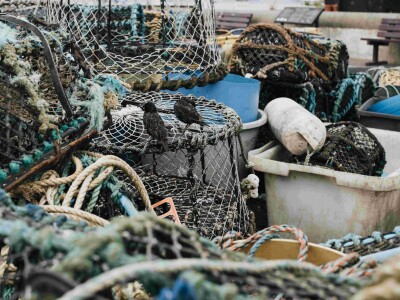Preparation prevents panic
From U.S. Coast Guard reports
Three hours into a Gulf of Mexico shrimping trip, the skipper of a 67-foot wooden trawler headed to the engine room at approximately 6:15 p.m., leaving his mate at the helm. He was seeking the cause of intermittent electrical power interruptions that were causing the vessel's lights to flicker.
He saw wisps of smoke as he approached the engine room. There were flames near the generator, just forward of the main engine. The skipper stepped back out on deck and yelled to the mate to take the engine out of gear. He told him that he was going to attempt to put out the fire. The skipper used a portable CO2 fire extinguisher on the generator's exhaust lagging, which seemed to be alight. The flames diminished, but then the fire flared, spread to the overhead and electrical wiring, and began burning out of control.
Returning to the wheelhouse, the skipper sent the mate aft to stand by in case they had to abandon ship. He then radioed a nearby fishing vessel, which acknowledged his request for help.
The skipper then tried to enter the engine room through a secondary door in the berthing compartment, but there was too much smoke. Returning to the wheelhouse, he made sure all engine room power had been secured.
Heavy black smoke was emanating from the engine room. The skipper decided to abandon ship at approximately 6:22 p.m., and headed aft to join the mate. As he passed the engine room door, an explosion occurred that burned his hands and forearms. Stunned by the blast, he thought he might be on fire and jumped into the water. The mate, having already donned his life jacket, hopped over the side with a life jacket for the skipper and helped him into it.
Within 20 minutes, the other fishing boat arrived and collected them. The assisting boat's skipper radioed the Coast Guard, told them what happened and that the trawler's skipper needed medical attention.
The assisting fishing vessel transferred both fishermen to a Coast Guard boat, which delivered them to a waiting ambulance. The skipper received treatment for second degree burns on his hands and arms. The trawler sank that night in 48 feet of water.
Lessons learned
The fire's cause isn't known. But it is likely that the trawler's generator malfunctioned, possibly overheating.
While some things are beyond the crew's control, preparation and preventative measures is the best way to ensure survival of any accident.
Keep the vessel clean. Mop up spills of flammable liquids (like fuel and hydraulic fluid). Frequently emptying engine room drip trays will help prevent fuel from leaking into the bilges.
Dispose of engine room rags in self-closing metal containers. Keep flammable and combustible materials and containers of flammable and combustible gases or liquids away from electrical installations and heat sources.
Having crew members participate in drills will ensure they respond quickly and correctly if an emergency arises. All should be familiar with the location and use of the vessel's firefighting and lifesaving equipment.
Additionally, the boat's maintenance plan should include regular inspection and proper stowage of all fire, lifesaving and general safety equipment.
Just 11 minutes elapsed from the time skipper detected trouble to the crew going into the water. Preparation can prevent panic. Stay cool and fish safe!
This article is based on U.S. Coast Guard reporting and is intended to bring safety issues to the attention of our readers. It is not intended to judge or reach conclusions regarding the ability or capacity of any person, living or dead, or any boat or piece of equipment.






